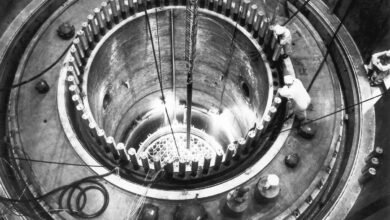NASA & Google Develop AI Health Assistant for Mars Missions

▼ Summary
– Longer and farther human-spaceflight missions make crew health management more challenging, requiring new solutions beyond current ISS support systems.
– NASA is developing an AI medical assistant (CMO-DA) with Google to enable Earth-independent medical care for astronauts on Moon and Mars missions.
– The AI tool, built on Google Cloud’s Vertex AI, uses speech, text, and images to diagnose and treat symptoms when real-time Earth communication is unavailable.
– Initial tests showed high diagnostic accuracy (74-88%) for scenarios like ankle injuries and ear pain, evaluated by physicians including an astronaut.
– NASA plans to expand the tool’s capabilities with additional data sources and situational awareness for space-specific conditions like microgravity.
NASA and Google have teamed up to develop an innovative AI-powered health assistant designed to support astronauts during extended space missions to destinations like Mars. This cutting-edge technology aims to address the growing challenge of providing medical care when crews are millions of miles from Earth, where real-time communication with ground-based doctors may be impossible.
The Crew Medical Officer Digital Assistant (CMO-DA) represents a major leap toward Earth-independent healthcare for astronauts. Unlike current missions to the International Space Station, where medical support is just a call away, future deep-space explorers won’t have the luxury of quick resupplies or emergency evacuations. The AI assistant, built on Google Cloud’s Vertex AI platform, integrates speech, text, and image recognition to help diagnose and treat medical issues autonomously.
So far, the system has been tested in three medical scenarios: ankle injuries, flank pain, and ear pain. A panel of physicians, including an astronaut, evaluated its performance in initial assessments, patient history analysis, clinical reasoning, and treatment recommendations. Results showed promising accuracy, with diagnostic correctness rated at 74% for flank pain, 80% for ear pain, and 88% for ankle injuries.
NASA retains full ownership of the source code, while Google provides the cloud infrastructure and model training under a fixed-price Public Sector Subscription agreement. The agency plans to expand the tool’s capabilities by incorporating additional data sources, such as medical devices, and refining its ability to account for space-specific conditions like microgravity.
Though initially designed for astronauts, the technology could eventually have broader applications. Google has not confirmed whether it will seek regulatory approval for terrestrial medical use, but the AI’s success in space could pave the way for similar tools in remote or underserved areas on Earth.
As NASA prepares for long-duration missions to the Moon and Mars, innovations like CMO-DA will be critical in ensuring crew safety and self-sufficiency. The collaboration highlights how public-private partnerships are driving advancements in both space exploration and healthcare technology.
(Source: TechCrunch)
